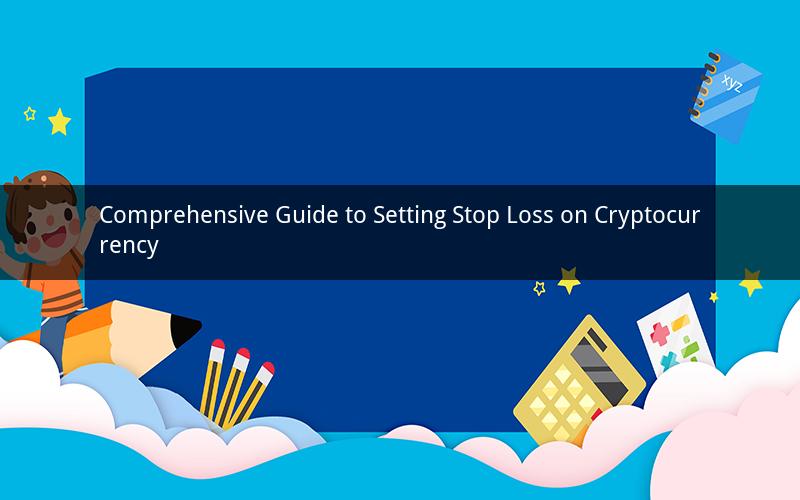
Introduction:
In the volatile world of cryptocurrency, managing risks is crucial for successful trading. One effective risk management strategy is setting a stop loss order. This article will delve into the concept of stop loss in crypto trading, its importance, and how to implement it effectively.
1. Understanding Stop Loss
A stop loss is an order placed with a broker to sell a security when it reaches a certain price. It is used to limit potential losses by automatically closing a position when the market moves against the trader. In the case of cryptocurrency, stop loss orders can help protect investors from sudden price drops.
2. Why Set a Stop Loss in Crypto Trading
The cryptocurrency market is known for its high volatility, which can lead to significant gains but also substantial losses. By setting a stop loss, traders can protect themselves from sudden price declines, especially in highly volatile assets like Bitcoin and Ethereum.
3. Types of Stop Loss Orders
There are two main types of stop loss orders in crypto trading: stop loss and stop limit orders.
- Stop Loss: This order triggers a sell when the market price reaches the specified stop price. It is an "all or none" order, meaning it will either execute immediately or not at all.
- Stop Limit: This order triggers a sell when the market price reaches the specified stop price but only executes at the limit price or better. It provides more control over the exit price.
4. Setting a Stop Loss in Crypto Trading
To set a stop loss in cryptocurrency trading, follow these steps:
- Analyze the market: Before setting a stop loss, it's essential to analyze the market and understand the potential risks involved. Consider factors like market trends, volatility, and recent price movements.
- Determine the stop price: The stop price is the price at which you want to exit the trade. It should be set based on your risk tolerance and market analysis. For example, if you bought Bitcoin at $50,000, you might set a stop loss at $45,000 to limit potential losses to 10%.
- Choose the order type: Decide whether you want to use a stop loss or stop limit order. Consider the potential exit price and the likelihood of the order executing.
- Place the order: Once you've determined the stop price and order type, place the order with your broker. Ensure that you have sufficient funds in your account to execute the order.
5. Best Practices for Stop Loss in Crypto Trading
Here are some best practices for setting and managing stop loss orders in crypto trading:
- Adjust stop loss levels: As the market evolves, adjust your stop loss levels accordingly. If the market becomes more volatile, consider placing a tighter stop loss to minimize potential losses.
- Use trailing stop loss: A trailing stop loss adjusts the stop price as the market moves in your favor. This allows you to lock in profits while still protecting against significant losses.
- Diversify your portfolio: Don't rely solely on stop loss orders for risk management. Diversifying your portfolio can help mitigate the impact of market volatility.
- Stay informed: Keep up with market trends and news that may affect the price of your cryptocurrency investments.
FAQs:
1. What is the difference between a stop loss and a take profit order?
Answer: A stop loss is an order to sell a security when it reaches a certain price, while a take profit order is an order to sell a security when it reaches a certain price to lock in profits.
2. Can I set a stop loss on a cryptocurrency exchange?
Answer: Yes, most cryptocurrency exchanges offer stop loss and take profit order functionality. Check the specific features and limitations of your chosen exchange.
3. How does a stop loss protect me from market volatility?
Answer: By setting a stop loss, you can automatically exit a trade when the market price reaches a certain level, preventing further losses due to market volatility.
4. Can I set a stop loss on a margin position?
Answer: Yes, you can set a stop loss on a margin position. However, be aware that margin trading carries higher risks, and stop loss orders may not always execute due to market conditions.
5. Should I use a stop loss on every trade?
Answer: While it's a good practice to use stop loss orders for risk management, it's not necessary for every trade. Consider your risk tolerance, trading strategy, and market conditions when deciding whether to use a stop loss.